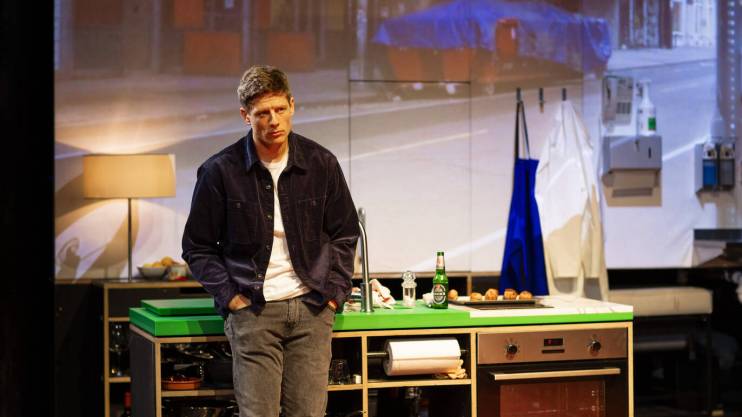A Little Life review: 4 hours of misery but James Norton is electric

Author Hanya Yanagihara has said of her 814-page, million-copy bestseller that she set out to create the literary version of an ‘ombre cloth’, a piece of material that’s light at the top and becomes increasingly saturated towards the bottom.
It’s a fitting metaphor for A Little Life in its book form. The doorstop of a novel follows four college friends – JB, Jude, Malcolm and Willem – as they embark upon adult life in New York City. And while the story of central character Jude St Francis is at times unbearably bleak, it’s interspersed with moments of lightness and love.
Belgian director Ivo van Hove’s adaptation, on the other hand, is a close to four-hour slog of unrelenting misery. As ever with van Hove, there’s a lot to be impressed by in the direction but taken as a whole it begins to feel like an endurance test – whether or not it’s enjoyable is almost beside the point.
At the heart of it all is James Norton. His performance as Jude – from abandoned boy to broken man – is breathtaking. He barely leaves the stage as his character is put through seemingly endless suffering. One scene in which he sits quietly, alone and still, brought me close to tears; he deserves every award he’s sure to be nominated for.
The staging is clever and immersive, with some audience members seated directly behind the action, and the cast cooking, eating, smoking and cleaning on stage before the show begins and throughout the production. Screens on either side of the set show rolling footage of city streets and buzz with static, while a live string quartet provides the soundtrack, heightening the tension.
Past and present are interwoven, with figures from Jude’s childhood talking to his adult self, as his traumatic memories literally stalk him across the stage. Elliot Cowan, who depicts his trio of tormentors is another standout, with a softly chilling manner giving way to stomach-turning cruelty.
But the litany of what basically amounts to mediaeval tortures – paedophilia, graphic rape, visceral self-harm and violence, literal pools of blood – almost numb you to Jude’s pain. The content warning leaflets handed to audience members upon arrival are entirely warranted.
Some of the play’s flaws come from issues with the book, not least its length, which makes it worthy of at least two plays, if not a trilogy, and its baroque excess at times lacks realism.
But van Hove must accept the larger portion of the blame. Yanagihara’s story asks us to consider our beliefs about art and exploitation, to question our impulses to turn away from others, and to bear witness to the lifelong effects of trauma. But the loss of Jude’s humanity is all the more painful when shown in contrast to his fleeting moments of joy – the top end of that ombre cloth – and without these the play borders on the gratuitous.
Only around half the novel is staged and van Hove appears to have chosen all of its dark and none of its light.
